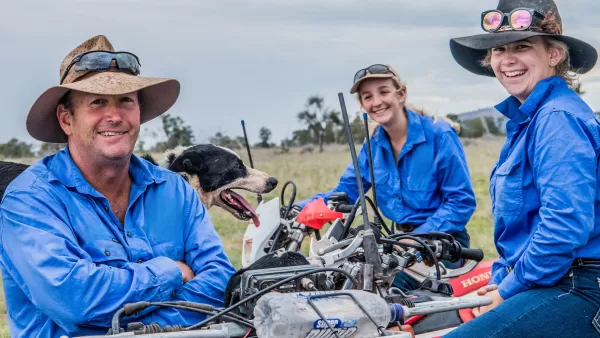Gin Gin Sugar Cane Farm
Energy Savings: 27% | Cost Savings: $26,014 | Capital Cost: $145,765 | CO2 Savings: 17.5 | Project Status: proposed
Industry:
Sugarcane
Location:
Wide Bay Burnett
Pump Type:
Not applicable
Irrigation Type:
Flood, Travelling gun
Technology:
Demand Management, Irrigation and Pumps, Variable Speed Drives
A sugarcane farming enterprise located in Gin Gin could benefit from a recent Energy Savers Audit. Farming requires constant decision making to maximise production and profit. Often irrigation systems are out of date and are in need of replacement to incorporate new technologies and updated knowledge.
The total area of cropping lands consists of 95.37 ha and is serviced by three pumps which are interconnected by an underground mainline. Each pump can supply water to all sectors of the farm if required. All of the pumps have recently been connected to Tariff 33. Pump one has already been fitted with a Variable Frequency Drive and with the connection to Tariff 33 has reduced energy usage by 25% and lowered cost per kWh by 28.6%. Pump two has a consistently high energy demand (48 kW) but is currently being restricted via a pressure choke valve and used sparingly due to the system’s inefficiency. This pump accesses water from the SunWater supply and the adjacent on-site dam although very little dam water has been available in recent times. Pump three is known as the backup pump and there is no plan to conduct further work at this time given its ability to irrigate without pumping (gravity feed) when in the flood irrigation mode. Energy consumption from the three pumps sites showed that a total of 78,335 kWh at a cost of $19,213 was used during the 2018-2019 period.
A recent energy audit showed how improving the current systems can lead to energy and cost savings. The recommendations explored in the audit included:
- Install a centre pivot irrigator at pump one.
- Install Variable Frequency Drive (VFD) to pump two and take back some irrigation load from pump three.
Table 1. Energy savings from audit recommendations
| Recommendations | Annual Energy Savings (kWh) | Annual Cost Savings ($) | Emission Savings (tCO2-e) | Capital Cost ($) | Payback Period (years) |
| Centre Pivot in pump 1 | 17,346 | 15,755 | 14.2 | 137,515 | 8.7 |
| Install VFD in pump 2 | 4,040 | 10,239 | 3.3 | 8,250 | 0.8 |
| Total | 21,386 | 26,014 | 17.5 | 145,765 | 5.6 |
The low pressure centre pivot irrigator means an energy demand reduction of 13 kW for this site. The VFD solution on pump two together with the recent change to Tariff 33, will allow to reduce operational costs and free up the pump (it will no longer have to be choked back) to take on a greater amount of the total farm irrigation effort. Pump three services a portion of the farm that lends itself to low pressure furrow irrigation, however, in recent years has been used more than usual to offset the higher cost of operation at pump two; this will change and operating hours at pump three will decrease as well as it’s energy use and cost since upgraded pump two will pick up this demand. The estimated cost of the planned combined upgrade is $145,765. It is predicted that the annual energy cost savings will be approximately $7,814 with a potential net return from improved productivity of $18,200.
By installing the recommendations in the audit, the business could reduce energy consumption for pumping by 27% and costs by 136%, including productivity gains, with carbon emission savings of 17.5 tCO2–e per year, which will enhance the profitability and productivity of the farm.
Table 2. Pre and post audit energy consumption, costs, and energy productivity savings
| Metric | Pre-Audit | Post-Audit | Reduction (%) |
| Energy Consumption (kWh) | 78,355 | 56,969 | 27 |
| Cost ($) | 19,213 | -6,800 | 136 |
| Energy Productivity (kWh/ha) | 821 | 597 | 27 |
An energy audit is a good investment
An energy audit is a great first step in moving a business towards a more efficient future by reducing energy use, costs and carbon emissions onsite.
The Energy Savers Plus Extension Program was delivered by the Queensland Farmers' Federation with support and funding from the Queensland Department of Energy and Public Works.

